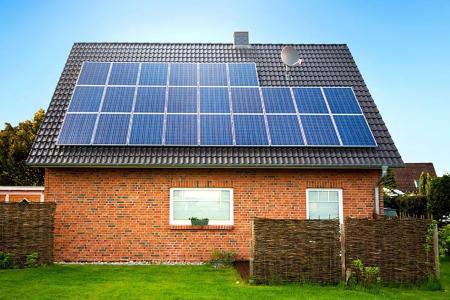Off-Grid Solar Power System: Empowering Independent Living

Imagine a remote cabin nestled in the heart of a dense forest, far from the hum of city life. Sarah, a nature enthusiast tired of urban chaos, decides to unplug from the grid entirely. With no utility lines in sight, she installs solar panels on her roof, batteries in her shed, and an inverter to convert sunlight into usable electricity. As the sun rises each day, her home comes alive—lights flicker on, appliances hum, and she brews her morning coffee without a single bill from the power company. This isn't just a dream; it's the reality of embracing an Off-Grid Solar Power System, a setup that transforms sunlight into self-sufficient energy for those seeking freedom from traditional power sources.
Understanding Off-Grid Solar Power Systems
What Makes an Off-Grid System Different?
Unlike grid-tied solar setups that rely on utility companies for backup, an off-grid system operates independently. It captures solar energy through panels, stores it in batteries, and distributes it via inverters and controllers. This autonomy is ideal for remote locations, cabins, or even tiny homes where extending power lines would be costly or impossible.
Key components include photovoltaic (PV) panels, which convert sunlight into DC electricity; charge controllers to regulate the flow and prevent overcharging; deep-cycle batteries for energy storage during cloudy days or nights; and inverters to transform DC into AC power for household use. Sizing these elements correctly is crucial—underestimating your energy needs could lead to blackouts, while oversizing wastes resources.
Benefits of Going Off-Grid with Solar
Adopting this technology offers environmental and financial perks. Environmentally, it reduces carbon footprints by harnessing renewable energy, cutting reliance on fossil fuels. Financially, after the initial investment, electricity is essentially free, with systems paying for themselves in 5-10 years through savings on utility bills.
For homesteaders or adventurers, the reliability shines during outages. While neighbors might scramble for generators, your setup keeps running smoothly. Plus, advancements in battery technology, like lithium-ion options, have made storage more efficient and longer-lasting.
Planning Your Off-Grid Solar Power System
Assessing Your Energy Needs
Before diving in, calculate your daily consumption. List appliances, their wattage, and usage hours—fridges might run 24/7 at 150 watts, while lights use 10 watts for a few hours. Tools like online solar calculators help estimate total kilowatt-hours (kWh) required.
Location matters too. Sunnier regions like the Southwest U.S. yield more energy per panel than cloudy areas. Factor in seasonal variations; winter might demand larger batteries for shorter days.
Choosing the Right Components
Start with high-efficiency solar panels—monocrystalline types offer better performance in limited space. For batteries, opt for sealed lead-acid or lithium for maintenance-free operation. Charge controllers come in MPPT or PWM varieties; MPPT is pricier but maximizes energy harvest.
Inverters should match your load—pure sine wave models are best for sensitive electronics. Don't forget wiring, fuses, and mounts for safety and durability.
Installation and Maintenance Tips
DIY installation is possible for handy individuals, but professionals ensure compliance with codes. Mount panels south-facing at an optimal tilt for maximum exposure. Ground the system to prevent shocks.
Maintenance involves cleaning panels quarterly, checking battery levels, and inspecting connections. With proper care, systems last 25+ years, though batteries may need replacement every 5-15 years.
Challenges and Solutions in Off-Grid Living
Common Hurdles
Energy storage limitations can be a snag during prolonged bad weather. High upfront costs—averaging $10,000-$30,000 for a small home—deter some. Expanding later might require upgrades.
Regulatory hurdles vary; some areas mandate permits or restrict off-grid living. Water heating or cooking might still need propane backups if solar alone falls short.
Overcoming Obstacles
Hybrid systems incorporating wind or generators provide redundancy. Government incentives, like tax credits, offset costs. Community forums and experts offer guidance on scaling.
Efficient appliances—LED lights, energy-star rated devices—stretch your power further. Monitoring apps track usage in real-time, helping optimize habits.
Real-World Applications and Success Stories
From eco-villages in Australia to remote farms in Africa, these systems empower communities. In the U.S., van-lifers use compact versions for nomadic freedom. Businesses like tiny home builders integrate them standardly.
One example: A family in Alaska powers their homestead solely with solar, supplementing with wood stoves in winter. Their Off-Grid Solar Power System not only sustains them but inspires neighbors to follow suit.
Conclusion
In a world increasingly aware of energy vulnerabilities, an Off-Grid Solar Power System stands as a beacon of independence and sustainability. Whether you're escaping urban grids or preparing for uncertainties, this technology offers reliable, clean power tailored to your needs. By planning carefully and investing wisely, you can achieve energy freedom that lasts a lifetime. Ready to go off-grid? Start assessing your setup today and join the growing movement toward self-reliant living.
- Art
- Causes
- Crafts
- Dance
- Drinks
- Film
- Fitness
- Food
- Giochi
- Gardening
- Health
- Home
- Literature
- Music
- Networking
- Altre informazioni
- Party
- Religion
- Shopping
- Sports
- Theater
- Wellness


